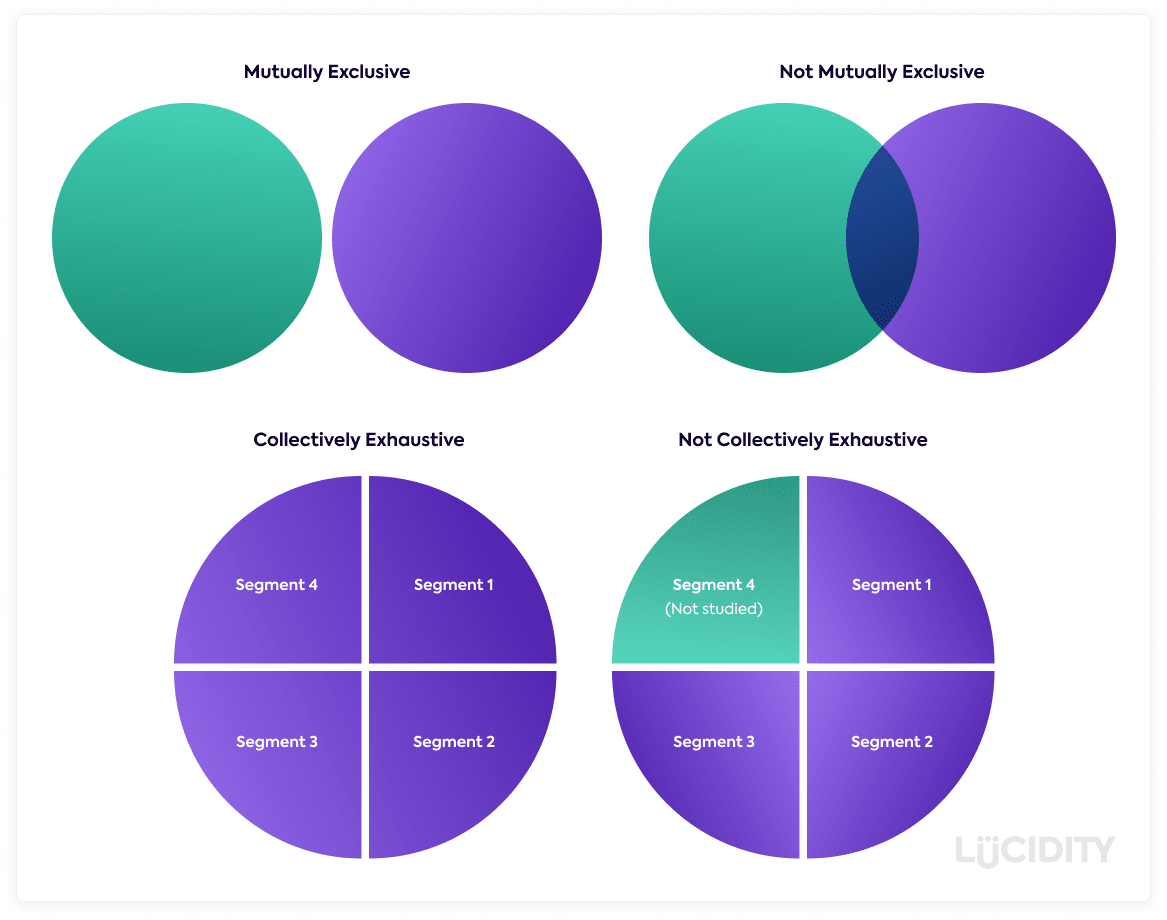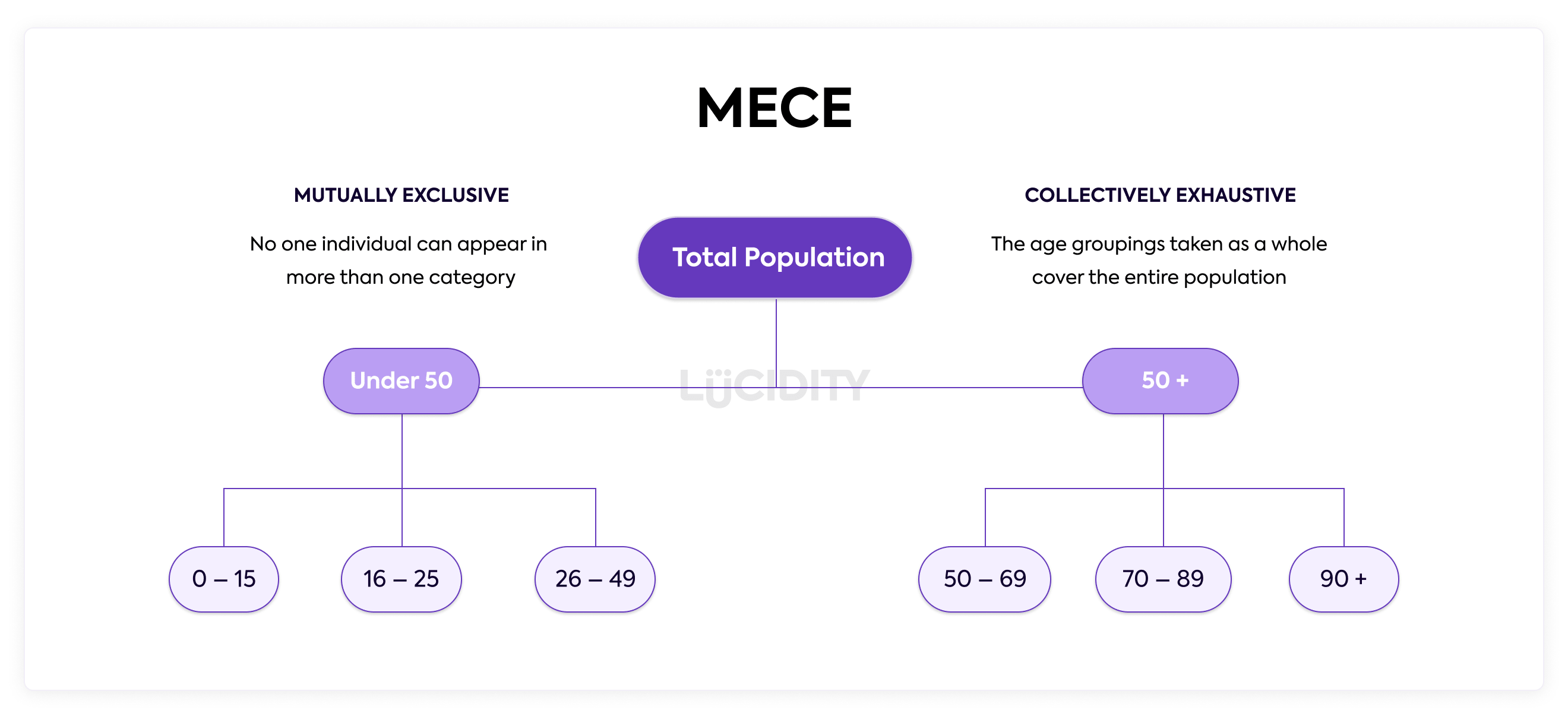The MECE Principle is a way to structure your thoughts and segment information in a manner that will help you address problems, establish solutions and develop your strategic plans further.
In itself it’s not a framework, instead you can think of it as an approach or a way to complement framework implementations.
What is the MECE Principle?
The MECE (pronounced “Me See”) Principle stands for “Mutually Exclusive and Collectively Exhaustive” and is an approach to putting some structure around your company or market data.
Items are grouped together in a mutually exclusive manner and ensuring no piece of data is lost as you segment each group further. The process usually involves a tree based diagram showing the way data cascades down into different segments.
For something to be MECE it needs to ensure:
- Items are mutually exclusive and do not appear in two groups on the same level
- No item of data sits outside the groups, everything has a place within each level
The popular example is age groups, as these are easily mutually exclusive – you can’t be both over 40 and under 30, despite what our Chief Marketing Officer’s dating profile would suggest!
How would I apply the MECE Principle?
The process of applying MECE is easy if you use frameworks like a Decision Tree. Let’s take a quick look at a the simple process:
Step 1: Decide your root
Start with your top-level sentence, this will either be a business problem or some assertion, but is the main reason you’re using a decision tree.
Step 2: Segment your data
Break down the root into sub-questions or sub-assertions to create a second level in your tree. Sanity check the new groups, are they all mutually exclusive, do they as a whole capture all the data from their parent root?
Step 3: Rinse & Repeat
Repeat step 2 until you’ve got to a point of being able to make key decisions or solve the problems you’re facing.
What are some advantages of the MECE Principle?
This is a really popular principle, used by McKinsey, and has advantages such as:
- Simple to follow, clear to document ideas
- Breaks down problems to be more manageable
- Complete, as by the very nature of the principle, items are not missed out
Are there any disadvantages to the MECE Principle?
It’s a fairly robust concept and hard to argue against being comprehensive. While not a disadvantage as such, the mutually exclusive aspect can cause challenges. It’s not always as easy in real world situations to group data in this way without doing multiple trees.
When should I use the MECE Principle?
Ultimately it comes down to what type of problem you’re trying to solve, and what frameworks you’re using. Concepts like Decision Trees lend themselves well to the MECE Principle, in fact most Tree based frameworks do, but you should firstly consider the problem.
If it’s a very complex problem with many moving parts then you may struggle with MECE, whereas something that is complicated but with clarity over the different components would lend itself better to a MECE scenario.
Who invented the MECE Principle?
The MECE Principle was invented by Barbara Minto, a pioneering employee of McKinsey in the 1960s.
What frameworks complement the MECE Principle?
You can apply the principle to most frameworks, but any tree based methodology is a better fit. Outside of the tree systems, Six Forces & Five Forces have basis in MECE.
I’ve completed my MECE framework, now what?
You’re likely looking at making some key decisions – take a look at Force Field Analysis for help in the decision-making process. If you’re at the point of looking at strategic options, then Porter’s Generic Strategies, Bowman’s Strategy Clock and the Ansoff Matrix are all helpful approaches.














